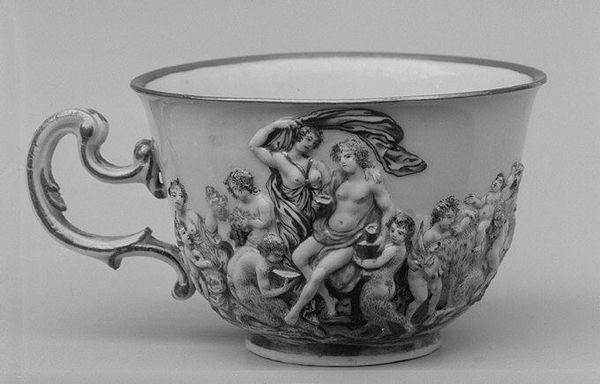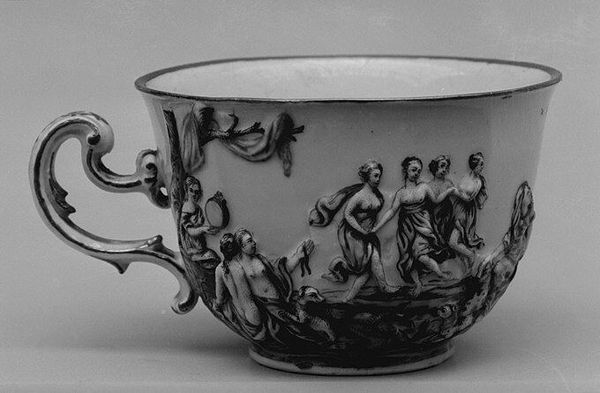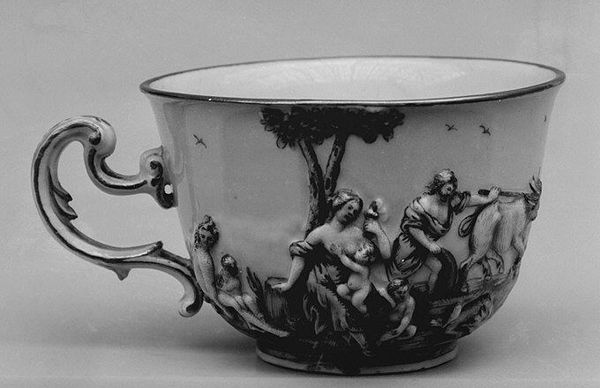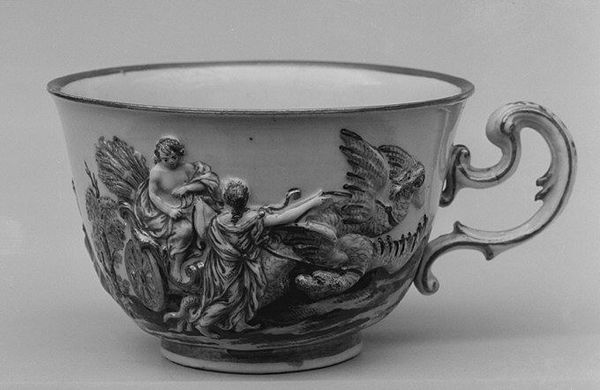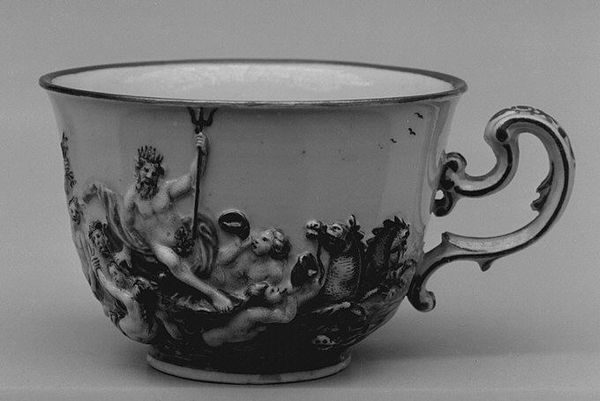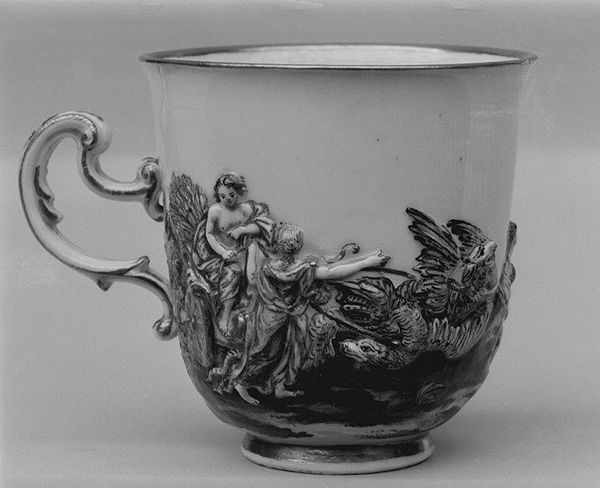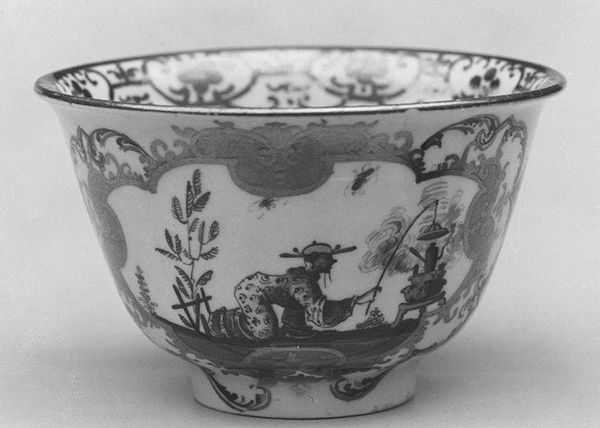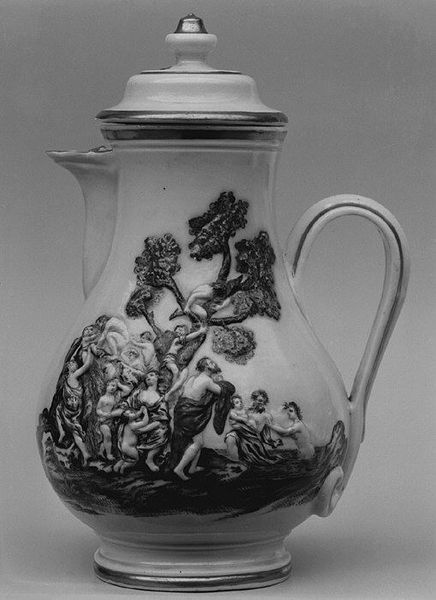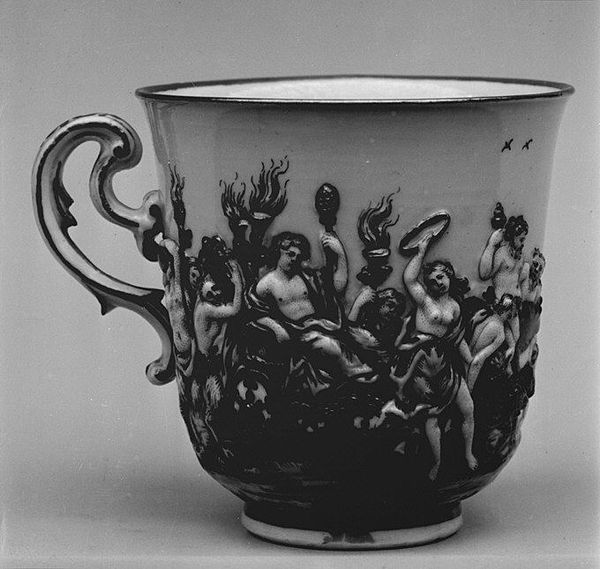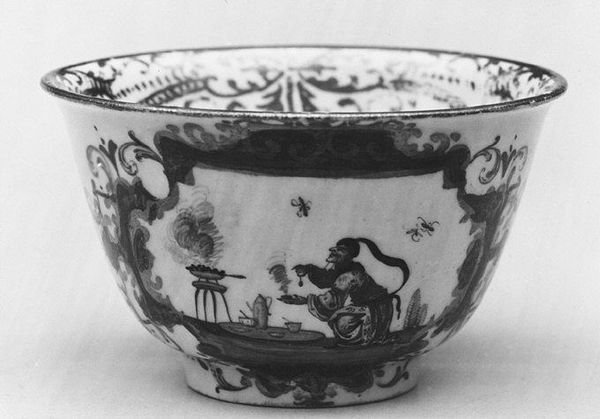
ceramic, porcelain, sculpture
#
ceramic
#
porcelain
#
figuration
#
female-nude
#
sculpture
#
genre-painting
#
decorative-art
#
nude
#
rococo
Dimensions: H. 2 1/8 in. (5.4 cm.); Diam. 3 1/8 in. (7.9 cm.)
Copyright: Public Domain
Curator: My eye is immediately drawn to the swirling figures; it’s a tiny scene teeming with dynamism! Editor: Exactly. We’re looking at a Doccia porcelain teacup, part of a larger service, crafted sometime between 1755 and 1765. It’s an exquisite example of Rococo style currently housed at the Metropolitan Museum of Art. Curator: And Rococo really does suit it, doesn't it? That incredibly detailed relief work! What catches me is how it transforms the simple act of holding a cup into an experience layered with artistry and even a bit of implied wealth. Editor: Yes, Doccia, under the keen direction of Marchese Carlo Ginori, positioned itself to compete directly with Meissen. Their ability to replicate and innovate on those high baroque styles really spoke to their aristocratic clientele. This cup signals access, doesn't it? To trade routes that made porcelain affordable, to leisure time… Curator: And speaking of trade routes, you can't ignore the cultural exchange! Note the mythological scene wrapped around the cup; it's so classically inspired and contrasts so dramatically with the practical function of the piece. Look how the eye dances around the nude figures, moving up and down as it navigates the form. Editor: Right. This cup offers more than utility; it provided owners an opportunity to demonstrate knowledge and refinement and to display both their sophisticated taste and their economic power in the act of consumption. The presence of these mythic subjects elevate the significance of drinking tea. Curator: Considering all those implications adds new flavors to every sip! It's a microcosm of its time, really, isn't it? A sip of tea, a taste of history. Editor: Precisely! Each curve and contour contributes meaning beyond aesthetics and I appreciate a tangible artifact that spurs this kind of imaginative, historical interpretation.
Comments
No comments
Be the first to comment and join the conversation on the ultimate creative platform.
